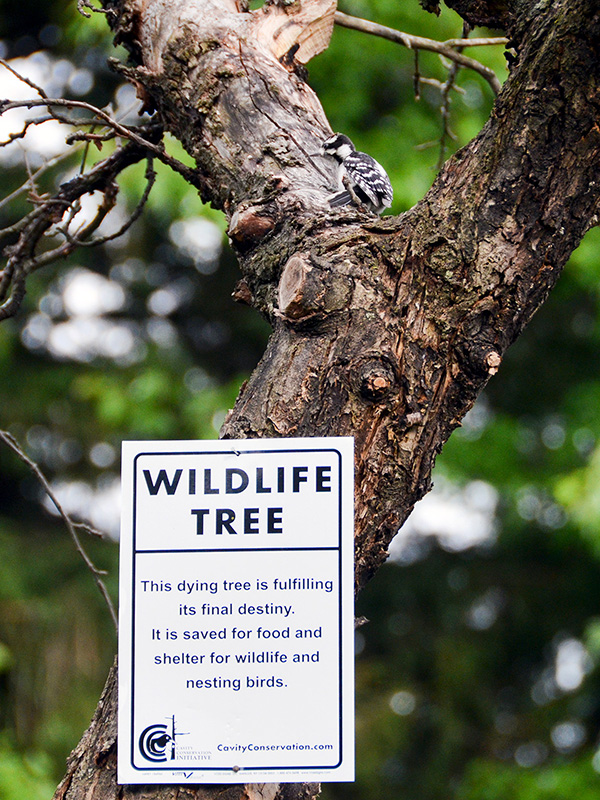
Dead plants — yes, dead plants — are an important part of our landscape. These can be parts of otherwise living plants or whole plants that have died. Even after they’ve died, they still benefit soil and wildlife. (Notice the baby downy woodpecker in the crotch of the tree looking for insects to eat.)
We display this sign from Cavity Conservation on our dead tree. I was reminded how unusual it is to retain a dead tree when I heard someone walking down the street along our yard remark, “Oh, a wildlife tree. I wonder what kind it is…”
Answer? A dead one!
NOTE: I do NOT mean diseased plants or parts of non-native invasive weeds whose seeds, bits of roots etc. might spread. We dispose of these in the trash to be incinerated, not in our compost pile or in the community yard waste pickup.
A pharmacy for monarchs
Perhaps the most unusual use of a dead plant (at least that I’ve learned about so far) is that monarchs appear to use the dead leaves of certain plants as a “pharmacy.”
They gather PAs (pyrrolizidine alkaloids) to prevent or cure various health problems. So far, I’ve read that monarchs have been observed on dead or dying leaves of golden ragwort, joe-pyes or bonesets, wild ageratum, and Virginia bluebells.
Bottom line, though, is that — yet again — we’re reminded that we need to be a little “messy” and not clean up everything … even if it’s dead!
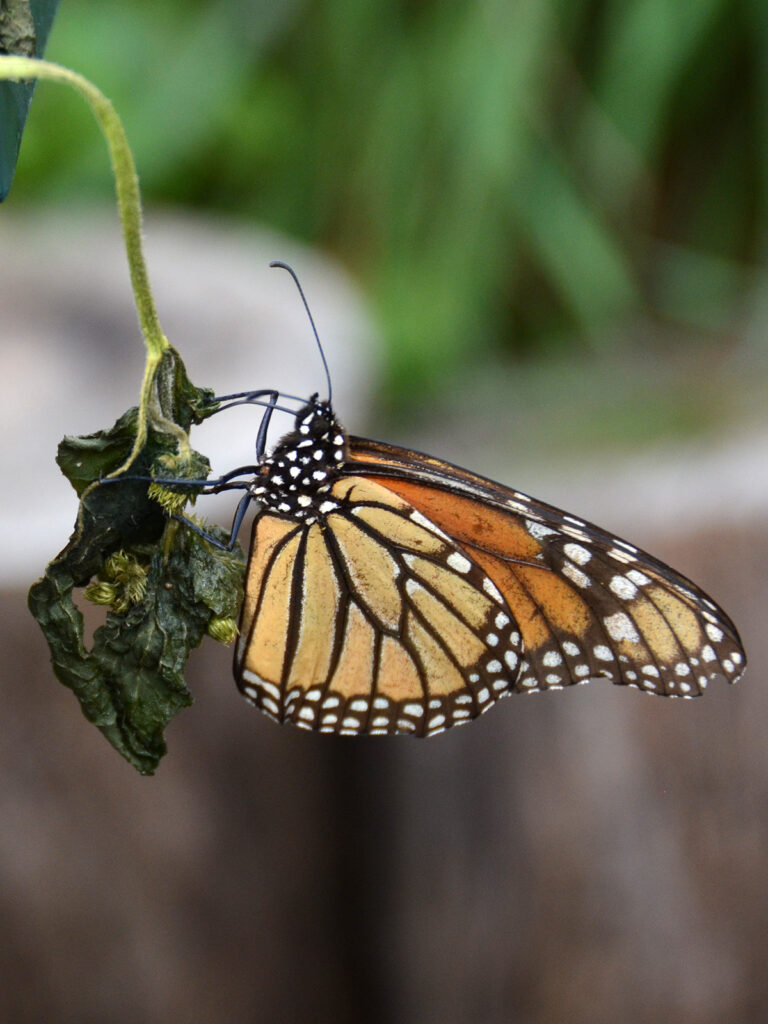
Learn more about this developing knowledge in the Monarch Rx Resources section below.
Fallen leaves
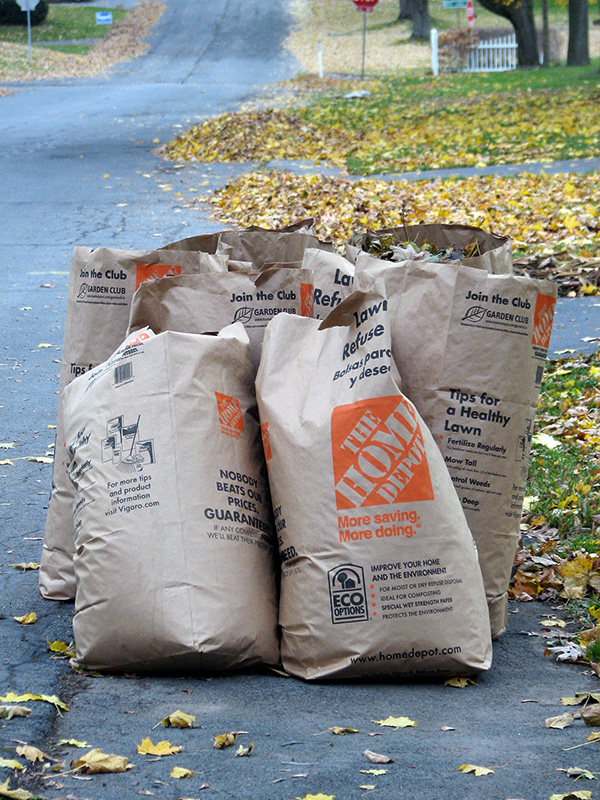
This is what we too often see in our community. Actually, “too often” is an understatement. It’s actually the main way people dispose of their fall leaves, the only exception being the leaf piles raked out to the curb to be picked up by the town’s fossil-fueled payloaders and dump trucks.
What a loss for the soil and especially for butterfly pupae and other little creatures planning to overwinter in the leaf litter!
What a loss for birds looking in the leaf litter for some tasty insect morsels!
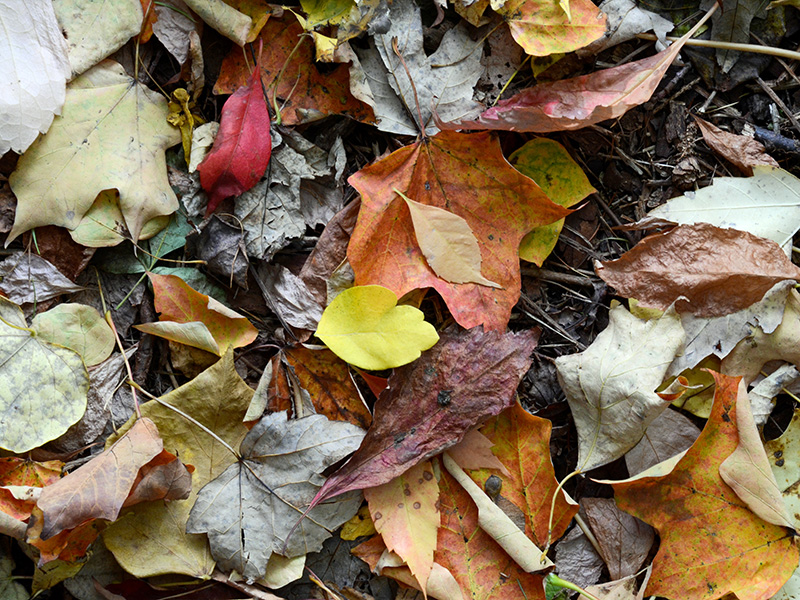
Instead of bagging up and disposing of fallen leaves and dead plant material, we leave them where they land or if there’s too much from other neighborhood trees, we add the extras to our compost pile (except for diseased materials or non-native invasive weeds that could spread). They return to the soil what the plants took from it to grow.
As The Humane Gardener points out, “Fallen leaves aren’t just habitat for toads, birds, and bees — they’re another great firefly nesting site too. They also help the ground hold moisture, which is critical to most fireflies during all their life stages; larvae and flightless females could be especially prone to drying out. Lack of moisture can affect firefly food sources as well, since snails and slugs require wet areas too. … Leaving fallen leaves under trees and shrubs and in gardens provides a moist refuge that’s denied by turfgrass lawns.“
Grasses and herbaceous plants left to overwinter
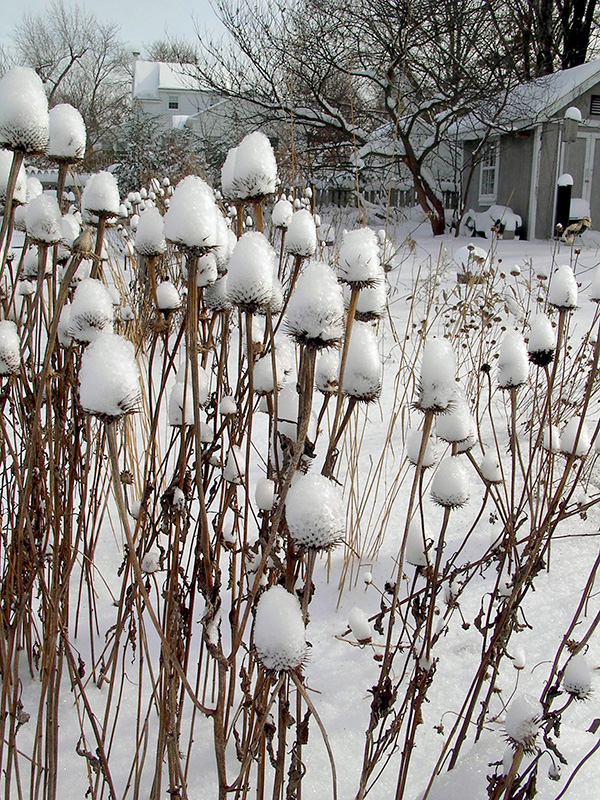
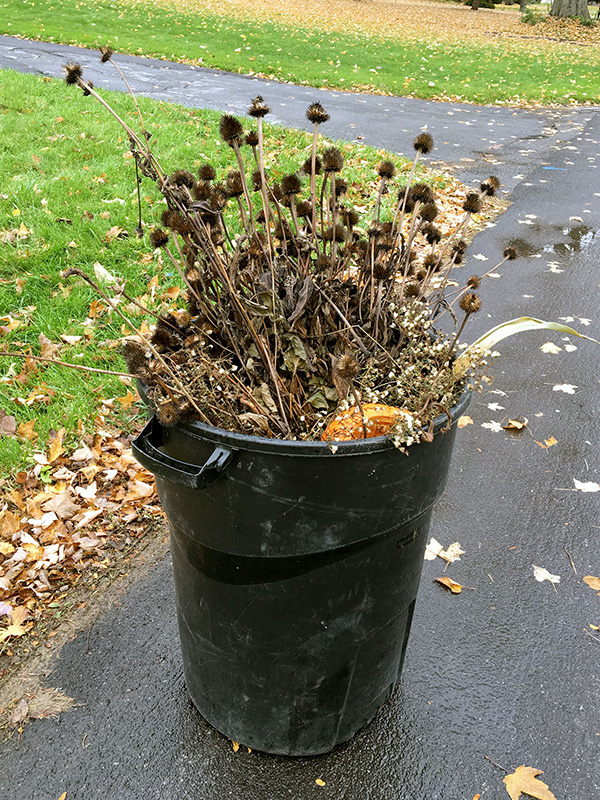
We also leave “dead” stalks and grasses over the winter. Of course, the plant isn’t dead — the roots are there, waiting to grow in spring — but in the meantime, they are places for insects to overwinter or to serve as food for overwintering creatures.
In contrast, I too often see these seedheads put out in the trash at the curb. These seeds could have fed a lot of birds throughout the winter.
And besides, we think these seedheads dusted with snow create a more interesting winter landscape than unbroken expanses of snow.
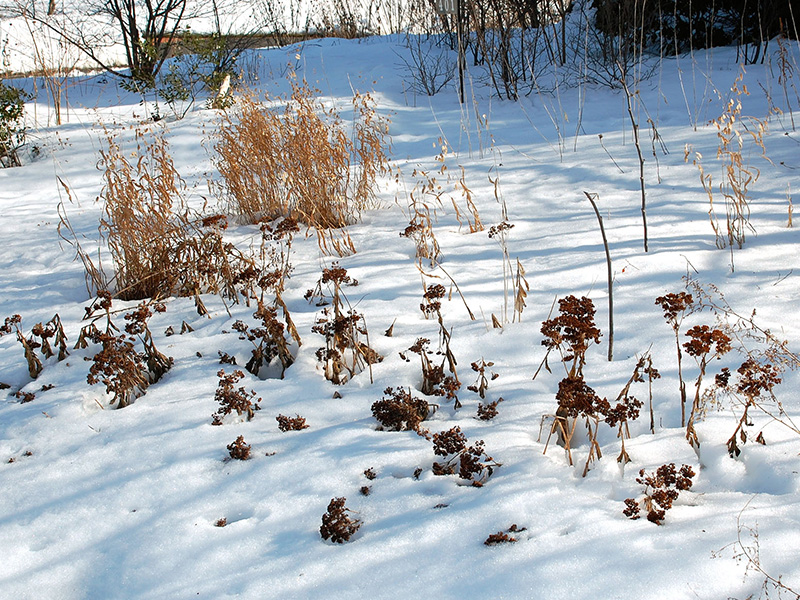
Dead shrubs and trees
Safety first! Tree limbs falling on your head can ruin your day! It’s important to assess the safety of any dead or dying trees.

But does every inch of a dead tree need to be removed down to the ground? In an out-of-the-way place, perhaps only the dead limbs need to be removed. In an area people frequent, perhaps cutting a large tree to about 10-15 feet (or even higher depending on the condition of the tree) might be safe. A sturdy 15-foot tree trunk, for example, isn’t going to suddenly topple over onto someone. If it has decayed, of course, you might want to leave it shorter.
We didn’t feel threatened at all by this snag we discovered on a walk in our neighborhood.
See Cavity Conservation for info on how to SAFELY preserve dead or dying trees.
Snags as habitat in our yard
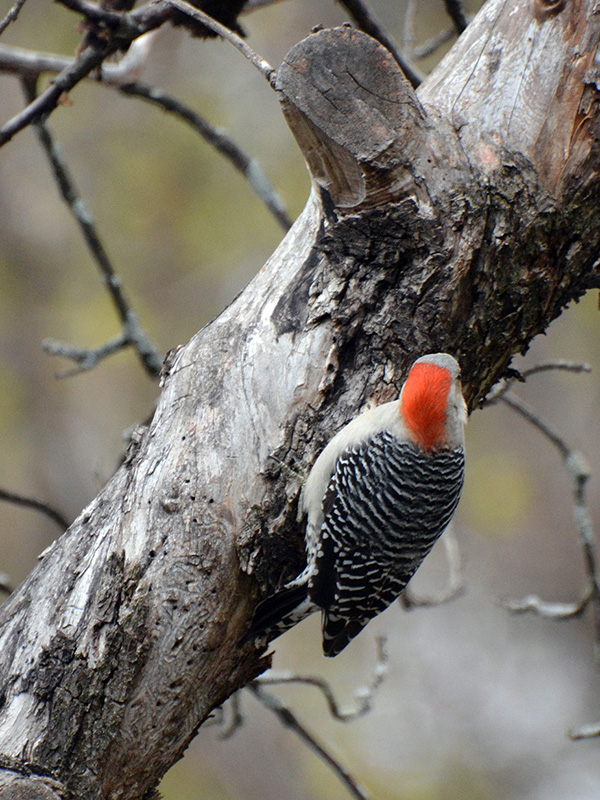
We enjoy watching birds, such as this red-bellied woodpecker, finding insects in dead trees.
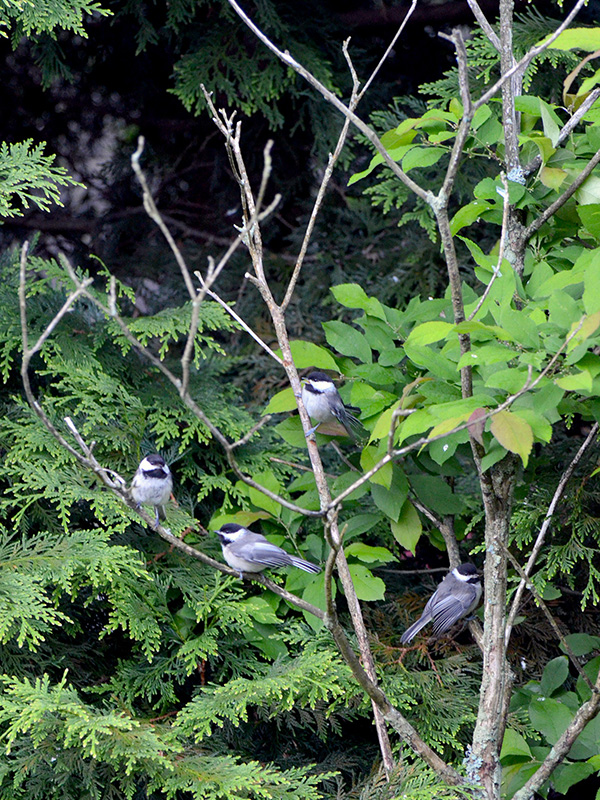
And certainly a lot of smaller trees can just be left as they are.
This dead pagoda dogwood (dying before it reached maturity) nevertheless served as a favorite perch for many birds, such as this family of chickadees, over many years.
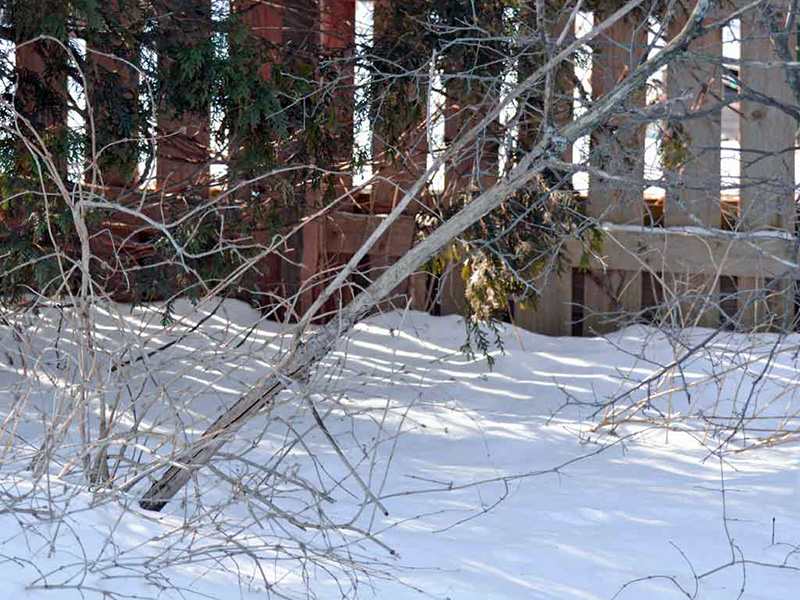
Eventually, it fell over, but it in no way endangered anything.
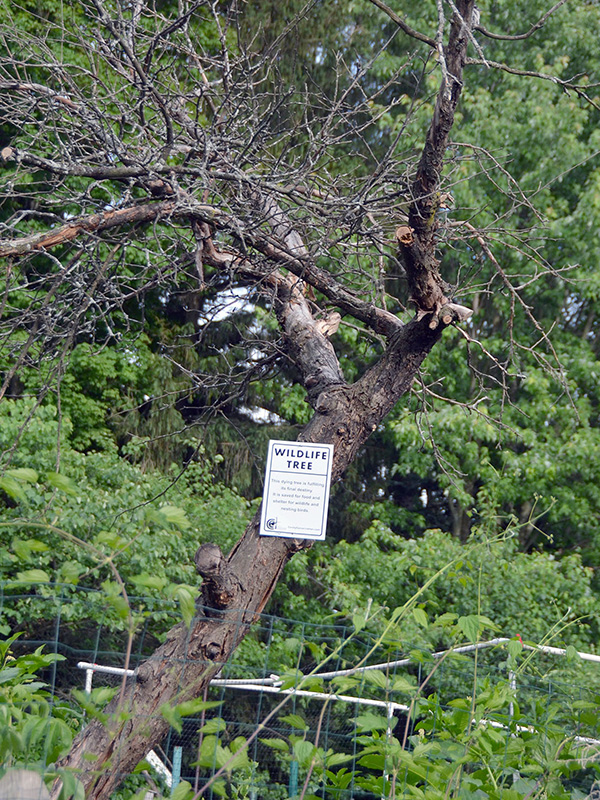
And our larger (about 15 foot) dead apple tree —located in the corner of our backyard away from where people walk — was full of life for years.
Sadly, this eventually fell over, too, but its trunk is being used as logs for our paths, so it’s still supporting life.
We moved our sign to our pear tree snag.
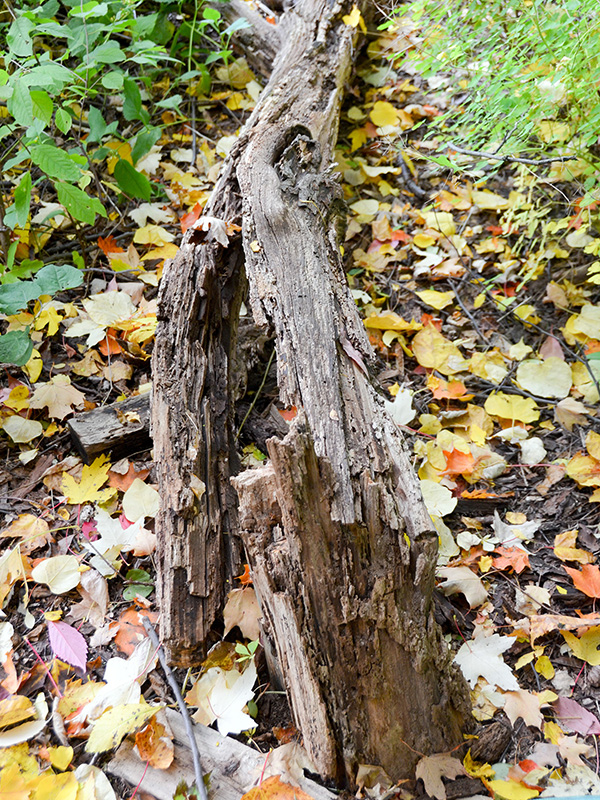
We left this redbud snag where it fell. This happened to be in the hemlock area near the shed in the backyard — nowhere near where it would have been a danger to anyone.
We’ve enjoyed watching it support life as it decays over the years. (Yes, it’s actually an interesting process!)
Our large sugar maple along the street has some dead areas. We suspect it resulted from the hatchet job done on it many years ago when a crew — not arborists — went around the neighborhood cutting too close to the trunk major limbs of street-side trees.
We had the large limbs chained a few years ago, and every few years we hire an arborist to safety-check it and remove any parts that might fall.
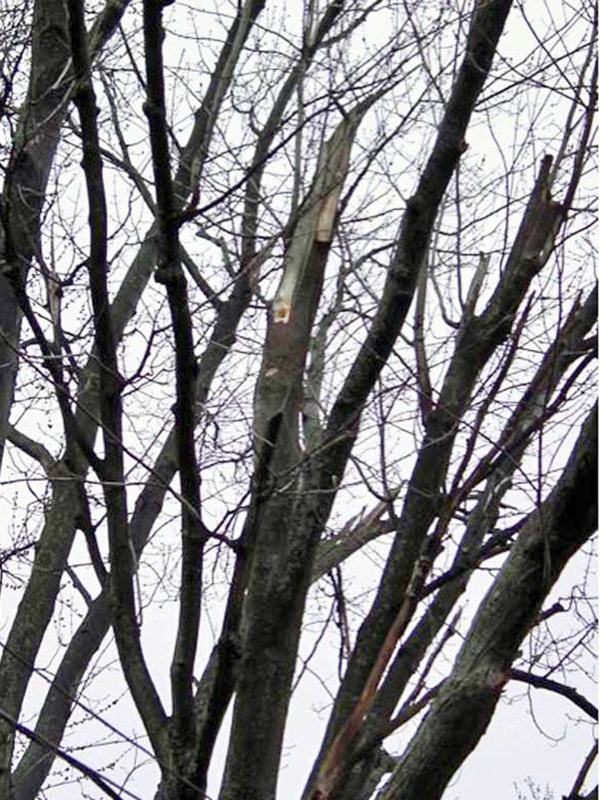
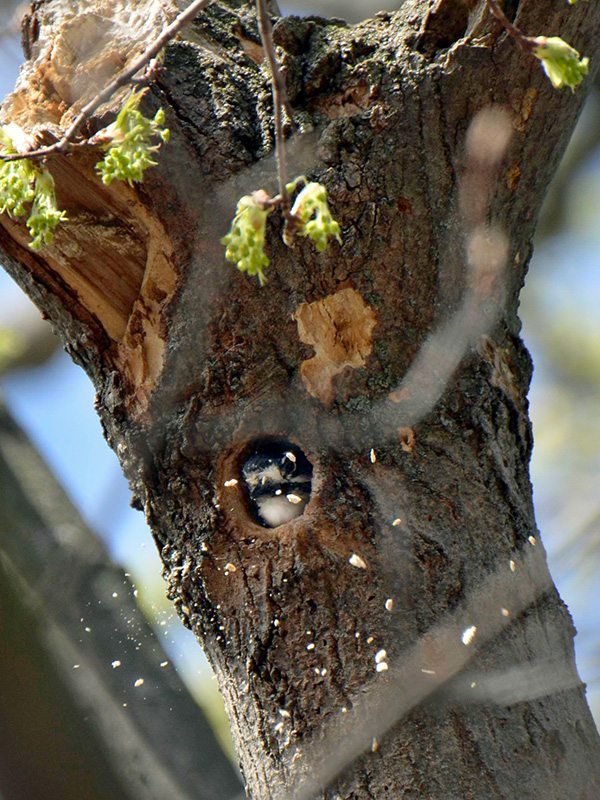
We enjoyed watching a downy woodpecker create the nest cavity you see in the photo above. It raised a batch of babies successfully.
A few years later, though, we regretfully had to remove this dead limb because it was no longer safe.
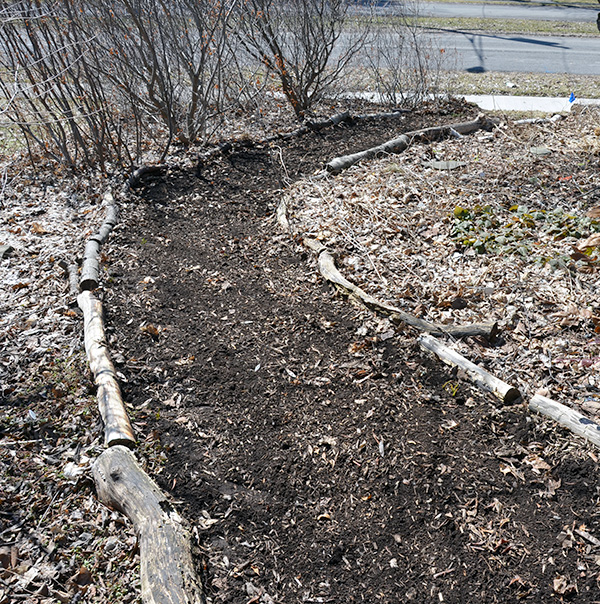
A rich source of habitat: the logs lining our paths.
As The Humane Gardener says: Underneath rotting wood, fireflies pupate. Provide these safe havens by lining paths with logs and branches around your habitat. (Cavity-nesting bees and woodpeckers will thank you too!)
They also provide a neat edge separating the beds and the paths.

We were thrilled to watch this pileated woodpecker getting insects from the logs we have lining our paths.
He stayed around for about a half-hour while we watched.
He knew that dead trees — even parts of the tree on the ground — are full of life!
Even in public spaces
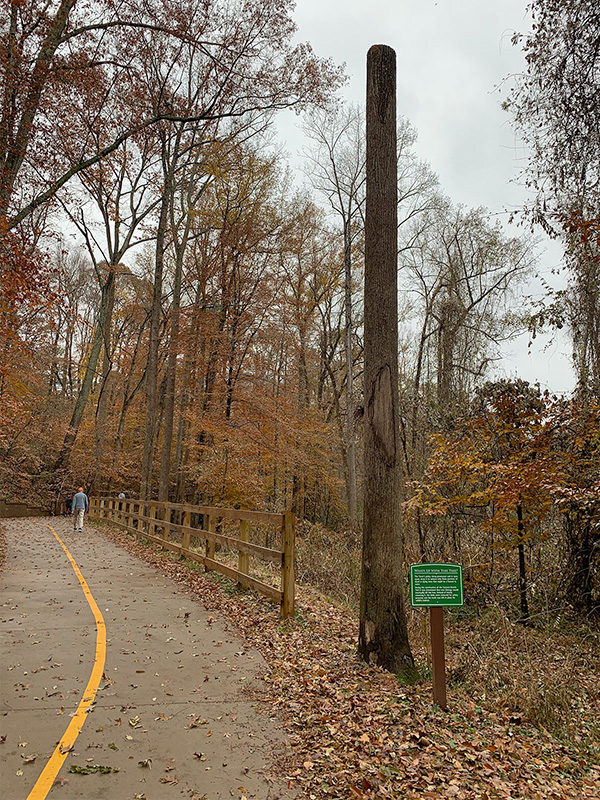
We were delighted to see this snag intentionally left along Bolin Creek Trail, a beautiful, very well-trafficked public trail in Chapel Hill, NC within walking distance of our daughter’s house.
They might have been able to safely leave more of the tree, I suppose, but until people get used to the idea of leaving snags, it was probably a good strategy as a first step.
Posting the explanatory sign (below) near the snag was a good idea, too.
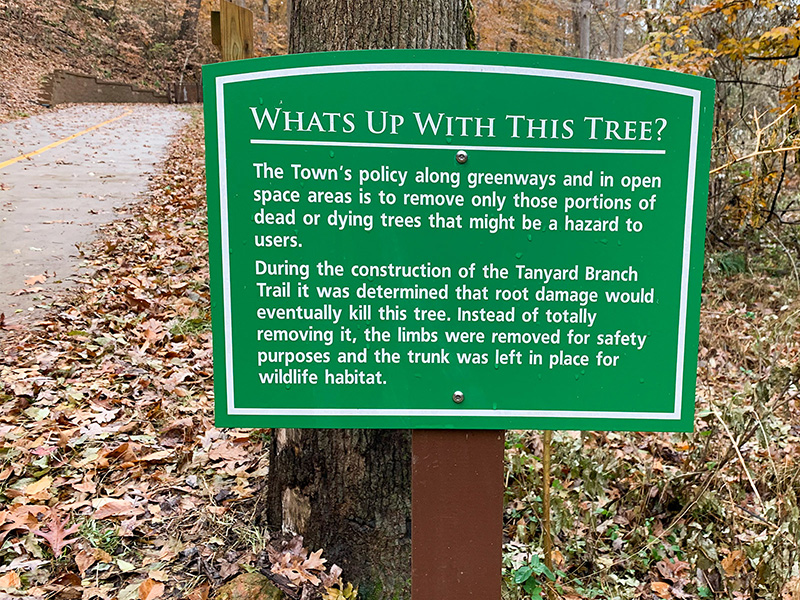
The bottom line
Plants die. They’ve died for millions and millions of years. It’s part of the cycle of life, and nature knows how to handle them.
Do we?
Resources
- The Cavity Conservation Initiative:
- This cavity conservation organization promotes the safe retention of dead and dying trees to preserve cavity-dwelling species and their habitats – Highly recommended! A wealth of materials including tips for making sure dead trees are safe and more!
- VIDEO: This is the tree – 7 min.
- Safely retaining dead trees
- Homegrown National Park:
- Leaf litter: Love it and leave it – Tallamy’s recommendations
- Smithsonian Gardens Blog:
- This Smithsonian Gardens blogpost shows how they saved a valuable snag in a people-safe way: “The garden is a dynamic landscape and one must be prepared to deal with the changes that nature brings. Through creative thinking the Smithsonian Gardens’ staff discovered a great opportunity to turn what could have been a significant loss to gardens into a valuable resource.”
- Humane Gardener:
- These animals are made possible by fallen leaves
- The stump tour starring woodpeckers
- Joe Gardener:
- Monarch Rx – Includes a video!
- Flutter By Meadows:
- Entomology Today:
- National Wildlife Federation:
- Accent on Natural Landscaping:
- Washington Dept. of Fish and Wildlife:
- Snags – The Wildlife Tree – A wonderful resource, including a video. Don’t miss the additional resources available below the video – including how to relocate snags!
- Washington Post:
Reflections
Nature bequests dying trees to enrich habitats. A dead tree is a legacy that can take dozens of years to replace, and in many cases, it will never be. Whenever a tree is cut down needlessly and hauled away prematurely we short-change our urban forests and our planet. Dead trees represent one of the finest examples of reciprocity with the environment. A study of its relationship with wildlife and organisms above and beneath the soil is a profound illustration of the fact that individuality and independence in our ecosystems is an illusion.
~ Cavity Conservation Initiative
